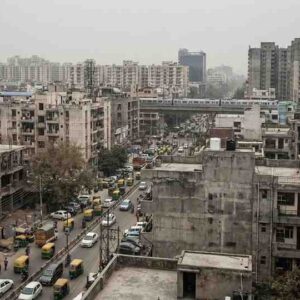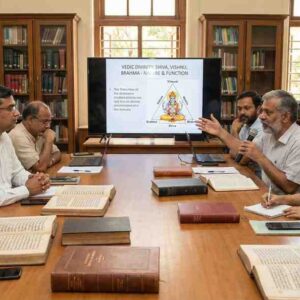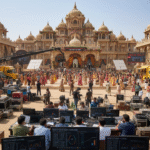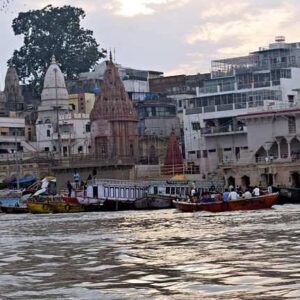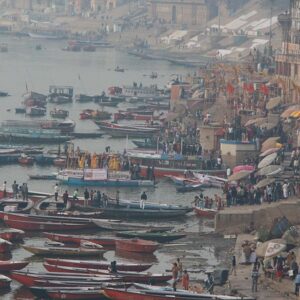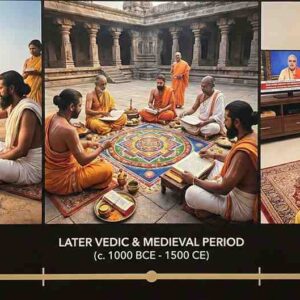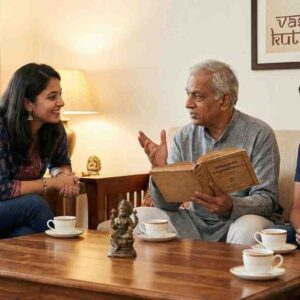A State Caught Between Past and Present
Uttar Pradesh (UP), often described as the cultural and historical heart of India, stands at a crossroads where age-old traditions are being challenged by the forces of modernization. From the bustling streets of Lucknow, steeped in Nawabi heritage, to the cutting-edge IT parks of Noida, UP is a land of contrasts. This duality raises an important question: Is the march toward modernity eroding the state’s rich cultural roots, or can tradition and progress coexist?
The Pillars of Uttar Pradesh’s Tradition
1. Religious and Spiritual Heritage
- Sacred Cities:
- Varanasi, Ayodhya, and Mathura are revered globally for their spiritual significance, attracting millions of pilgrims annually.
- The Ganga River remains a symbol of life and faith, with rituals performed daily at its ghats.
- Festivals:
- Holi in Barsana, Diwali in Ayodhya, and the Kumbh Mela in Prayagraj showcase the state’s vibrant traditions.
2. Art, Craft, and Cuisine
- Art and Music:
- Kathak dance and Hindustani classical music have their roots in UP, flourishing in the courts of Awadh and beyond.
- Craftsmanship:
- Banarasi silk sarees, chikankari embroidery, and brassware from Moradabad remain iconic symbols of UP’s artisanal excellence.
- Culinary Traditions:
- The rich flavors of Awadhi biryani, kebabs, and sweets like peda and gujiyas reflect the state’s culinary depth.
3. Cultural Practices
- Joint Family System:
- The traditional family structure emphasizes community living and shared responsibilities.
- Folk Traditions:
- Storytelling forms like Ramlila and folk dances like Raslila connect communities with their historical and mythological roots.
The Forces of Modernity
1. Urbanization and Infrastructure
- Urban Expansion:
- Cities like Noida, Lucknow, and Kanpur are rapidly expanding, driven by industrial growth and infrastructure projects like the Purvanchal Expressway.
- Impact:
- Urbanization is reshaping traditional lifestyles, with nuclear families replacing joint setups and modern housing replacing ancestral homes.
2. Technology and Digital Revolution
- Digital Adoption:
- Initiatives like Digital India have brought smartphones, internet access, and online education to rural and urban UP alike.
- Impact:
- While technology bridges gaps, it has also diminished the role of oral traditions and face-to-face interactions that are central to UP’s culture.
3. Changing Lifestyles and Globalization
- Western Influence:
- Exposure to global trends through media and education has led to shifts in clothing, language, and daily habits.
- Impact:
- Traditional attire and languages like Bhojpuri and Braj are increasingly giving way to modern fashions and English dominance.
Tradition vs. Modernity: A Delicate Balance
1. The Erosion of Traditional Values
- Decline of Practices:
- Rituals like Ramlila are losing their appeal among younger generations, who prefer entertainment through digital platforms.
- Impact on Family Structures:
- The rise of nuclear families is weakening intergenerational bonds and shared cultural practices.
2. The Rise of Hybrid Identities
- Fusion of Old and New:
- Modern weddings incorporate traditional rituals with contemporary aesthetics, reflecting a blending of values.
- Youth Perspectives:
- Younger generations are redefining traditions by maintaining selective practices while embracing modern lifestyles.
3. Economic Pressures
- Decline of Artisanship:
- Traditional crafts like Banarasi silk weaving are under threat due to mechanization and declining demand, despite government initiatives like One District, One Product (ODOP).
- Impact on Rural Communities:
- Migration to cities in search of better opportunities is leading to the abandonment of ancestral practices.
Preserving Traditions Amid Progress
1. Educational Initiatives
- Incorporating Culture in Curriculums:
- Schools should teach regional history, languages, and traditional arts to ensure cultural continuity.
- Folk Art Workshops:
- Promoting folk dances, music, and storytelling among youth can revive interest in traditional practices.
2. Government and Community Support
- Craft Preservation:
- Strengthen schemes like ODOP to support artisans and ensure sustainable livelihoods.
- Cultural Tourism:
- Promote heritage tourism by integrating traditional festivals and crafts into travel experiences.
3. Leveraging Technology
- Digital Platforms:
- Use social media and digital archives to document and share cultural practices with a wider audience.
- Online Craft Markets:
- Enable artisans to sell their products globally, ensuring the survival of traditional crafts.
Conclusion: Can Tradition and Modernity Coexist?
Uttar Pradesh is a state of dualities, where the sacred coexists with the secular, and ancient practices blend with contemporary lifestyles. While modernity offers opportunities for progress, it also poses challenges to preserving the state’s cultural roots.
The path forward lies in embracing a balanced approach—where progress does not come at the cost of tradition, and tradition evolves to remain relevant in a modern context. By fostering a culture of respect for the past while embracing the possibilities of the future, UP can ensure that its rich heritage continues to thrive alongside its modern aspirations.

